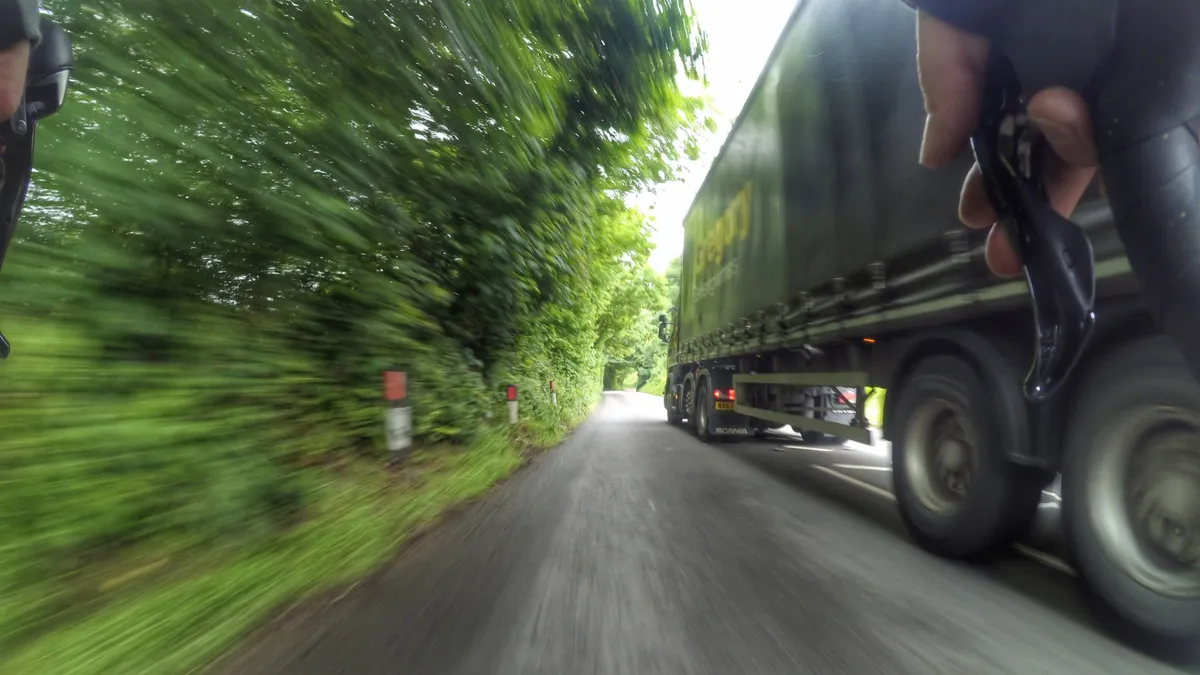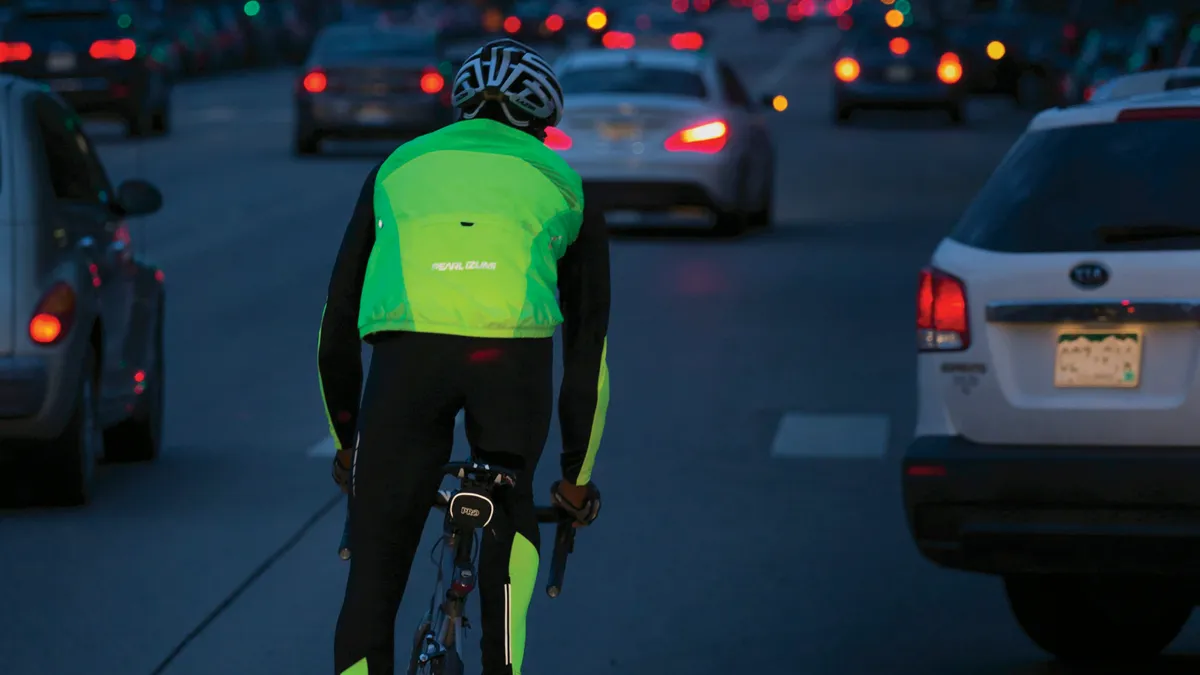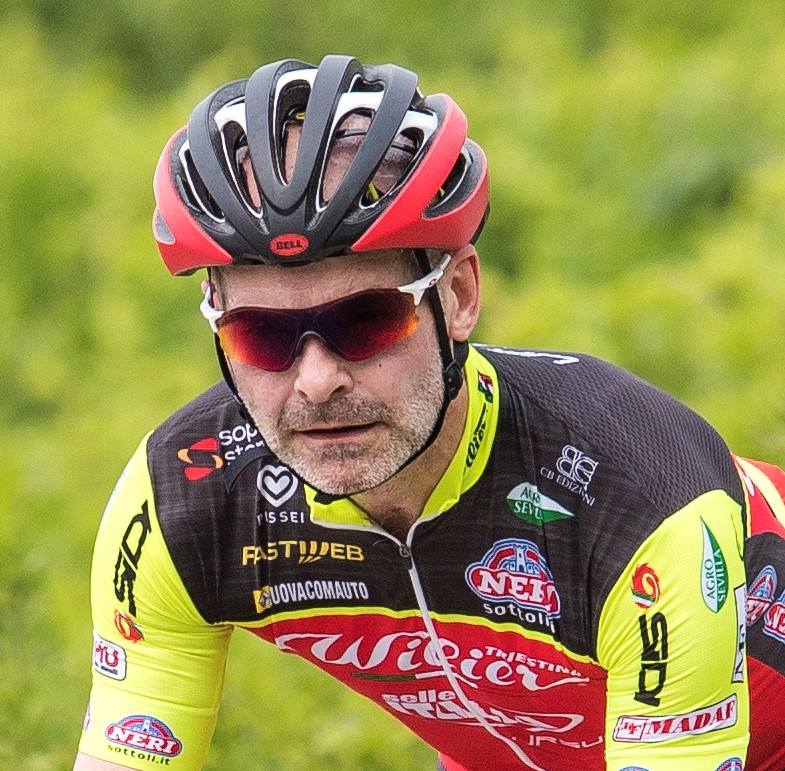Conventional wisdom says brighter colours and reflective clothing will increase your visibility when cycling.
Rule 59 of the UK Highway Code, for example, recommends cyclists should wear light-coloured or fluorescent clothing during the day and reflective clothing and/or accessories after dark.
However, there’s little scientific evidence to support this opinion.
We consulted an expert on the role of human factors in road traffic accidents, who highlighted research on how biomotion can help increase your road presence and maybe reduce your risk of a collision when cycling.
The myth of invisibility

Cycling UK has reviewed the evidence on high-visibility clothing and other measures to make cyclists more conspicuous, concluding that: “If wearing hi-vis helps people feel safer when cycling and more willing to do it, that is only to be welcomed. It is, though, hard to prove whether hi-vis makes any significant impact on cyclists’ safety and there is very little convincing evidence to support the argument that it does.”
Despite this, there's still a widely held belief that hi-vis contributes to rider safety.
In January 2025, a UK parliamentary question tabled by Munira Wilson, MP for Twickenham, asked whether the Department of Transport had assessed the merits of requiring cyclists and motorcyclists to wear high-visibility attire after dark.
So what does increase cyclists’ road presence, attract drivers’ attention and reduce the risk of riders being involved in road traffic accidents?
How attention really works

Dr Marc Green, based in Ontario, Canada, is an expert in the role of vision, perception and human factors in transportation collisions, including those involving pedestrians and cyclists.
Green has analysed the available research on the effectiveness of conspicuity aids for cyclists, including lights and fluorescent and reflective clothing. As with Cycling UK, he points out that it’s difficult to come to a definitive conclusion on their benefits, which he says is due to the difficulty of designing an adequately controlled experiment that rules out other factors.
An experiment that asks a driver to ‘spot the cyclist’, for example, primes them to look for a rider, while a driver in a real-world situation might not be looking out consciously for cyclists.
Green contrasts the sensory conspicuity triggered by such experiments with cognitive conspicuity, a function of driver expectations, and says that raising the latter is more significant in preventing accidents.
He draws out the difference between two types of conspicuity. Sensory conspicuity, he says, is more important when a viewer is searching for a known target, but is less effective when encountering an unexpected object.
In contrast, cognitive conspicuity is more important in perceiving unexpected objects and has been suggested by some researchers as the main safety issue for cyclists. These ‘looked but failed to see’ errors stem from driver cognition.
Green says this is largely a function of driver expectation, which in turn is related to prevalence (how many cyclists there are on the roads) and cyclists’ behaviour (whether they obey expected road discipline).
What the data shows

He points to one randomised control study, which looked at cyclists travelling in normal conditions.
According to Green, the study showed that: “Bicyclists wearing fluorescent jackets had about half the collisions/near misses of those without. However, some of the benefit may have been due to biological motion.”
This conclusion is borne out by another study that showed fluorescent yellow vests alone did not confer an improvement in the distance at which drivers detected cyclists in daylight. Adding trousers in the same colour did, though, which the authors attributed to the biological motion of the riders’ legs.
What really helps

Green points to a large number of studies that have found gains in night-time visibility and conspicuity when retroreflective material or lights are placed on cyclists’ joints, particularly when situated on cyclists’ ankles, thighs and knees.
Other research has found that reflective material or lights placed on pedal cranks or riders’ heels improved detection at night, bearing out the evidence that biomotion helps improve detection. In the UK, there’s a legal requirement to have reflectors on pedals.
When Look recently launched its Keo Vision pedals, with built-in lights, it cited research from the US that found a moving light was 5.5 times more likely to be noticed than a static constant light and almost twice as noticeable as a flashing light attached to a non-moving part of a bike.
So, the evidence points to the usefulness of biomotion, attaching lights or reflectors to moving parts of a bicycle or rider to increase conspicuity for cyclists.
While a flashing bike light and high-visibility clothing can help, it’s the rotation of the pedals and the movement of the legs that seem to be most significant in attracting drivers’ attention.
Green summarises the available evidence: “It looks to me like this: steady vs flashing makes no difference in rural or other areas where there aren't a lot of background lights. Flashing is better in urban areas where there are a lot of steady background lights. The flashing is the only way to stand out from a steady background.”
Green points out one disadvantage of flashing lights, though. ”It is difficult to localise single lights," he says. "Drivers may not be able to tell exactly where you are. Distance is especially hard to judge.”
So there are potential safety benefits in using both a flashing and a constant light or a ‘hyper-constant’ pulsed light at night. Look cites this as an advantage of its pair of pedal lights.
Green concludes: “Conspicuity aids [such as hi-vis clothing] likely have some benefits, but their effect seems relatively weak. The likely reason is that cognitive conspicuity, which is a function of driver expectations, is much stronger than the sensory conspicuity created by the aids.”
It’s a conclusion that Cycling UK’s summary endorses. “Research suggests that retroreflective accessories designed to make you more conspicuous in the dark – especially anything that moves when you pedal (e.g. ankle straps) – are probably worth the investment,” it says.





